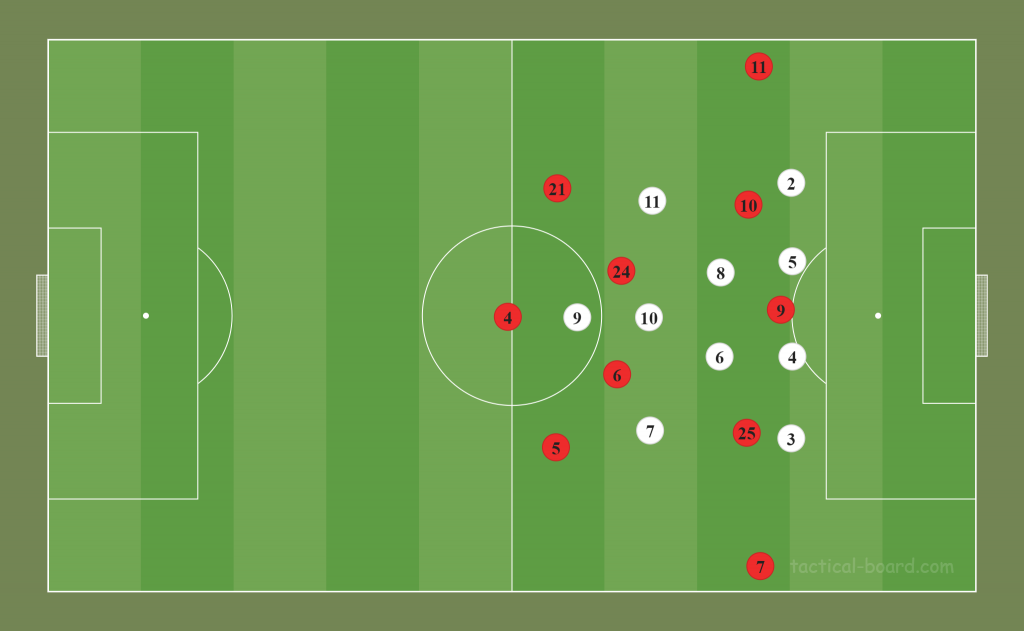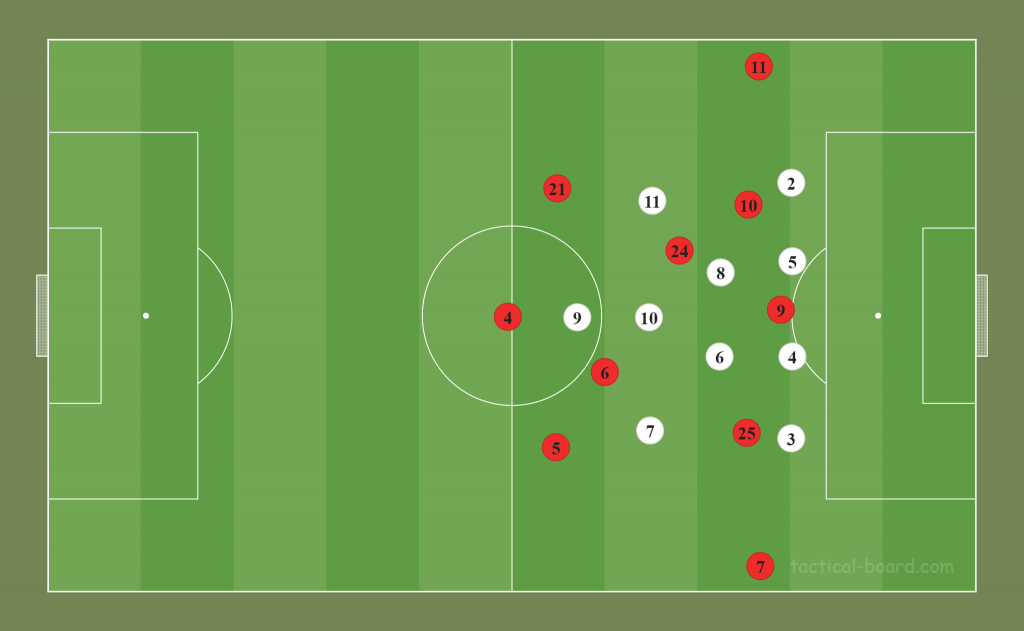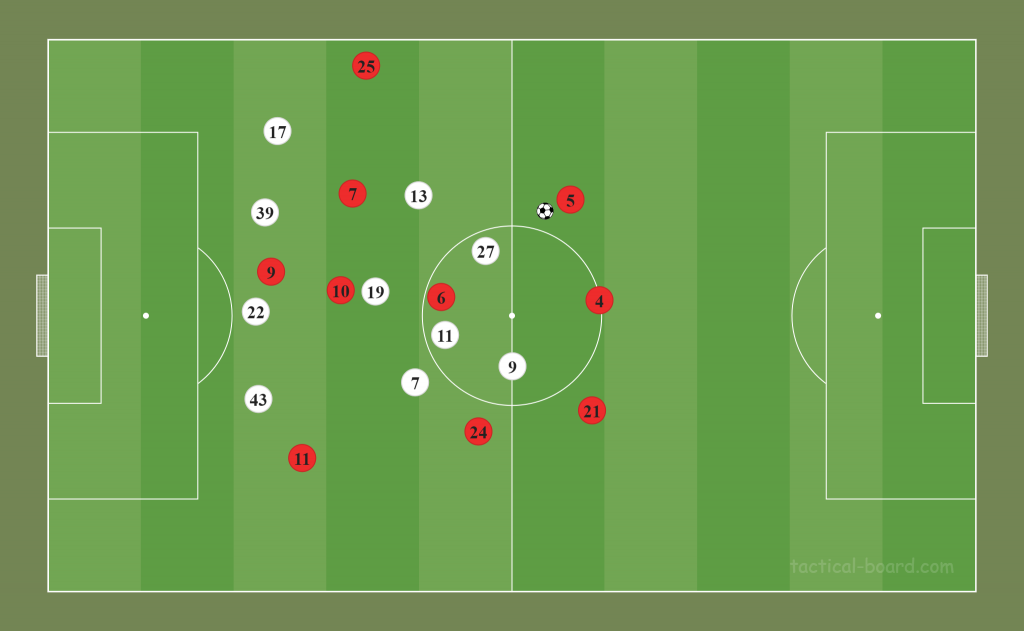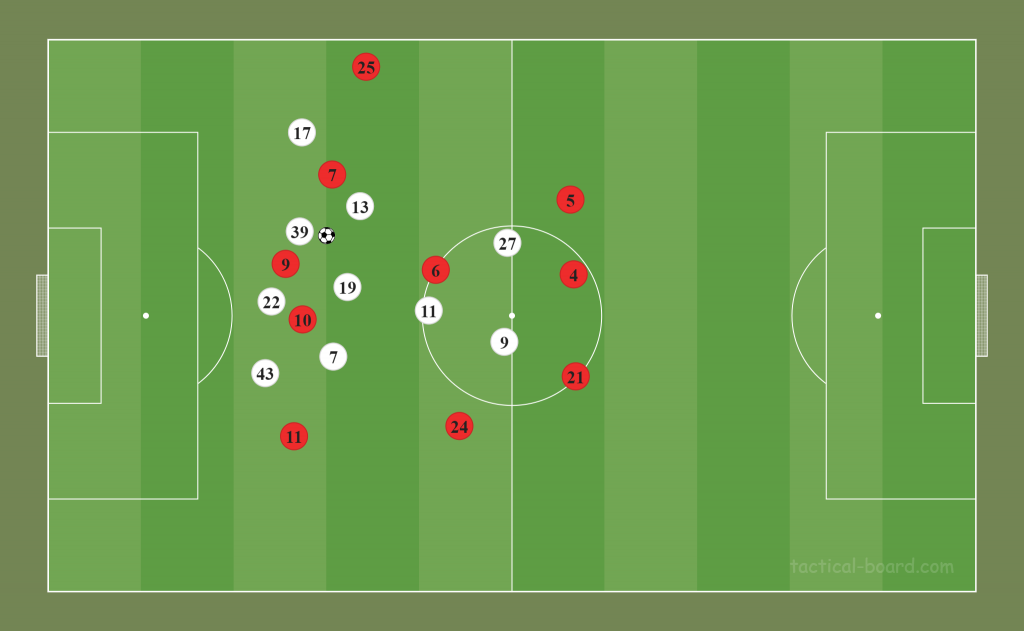
To understand Bayern Munich’s gegenpressing, firstly, we have to look at Bayern Munich set attacks shortly. In set attacks, Bayern Munich uses 3-2-5 line up. Wing backs go forward. Wingers take position in half-spaces and they play in a free and game maker role.

One of the centre midfielders could close to forward or go to a different space from his regular space to support attack and find space. When it happens, Bayern Munich have one extra player in forward and they attack with like a 3-1-1-5. This extra player could confuse opponent defenders’ minds. But also if Bayern Munich lose the ball when they are in like 3-1-1-5, they can’t use gegenpressing effectively. Because when one of the centre midfielders doesn’t take position centrally in front of Bayern Munich defense line, they can’t make intensity after they take the ball and opponent starts transition attack. I will explain with an example.

This is a situation from the match against Salzburg in the first leg. Minute is 40:27. Salzburg defend with a 4-1-2-1-2 line up. Bayern Munich’s one of the centre midfielders Tolisso (number 24) takes position in left half-space. Bayern Munich’s right stopper has the ball.

Right stopper tries to pass to centre forward but Salzburg’s left stopper takes the ball before centre forward. Now Bayern Munich try to take the ball quickly with gegenpressing. But they can’t. Because when Salzburg players take the ball, Salzburg have 2 players which are close to the ball to start a transition attack: number 13 and 19. Bayern Munich has only one player: number 6. So after Salzburg’s left stopper takes the ball, if he passes to one of these players, Bayern Munich has only one player to press two players. And because it’s physically impossible, Salzburg can start the transition attack comfortably.

